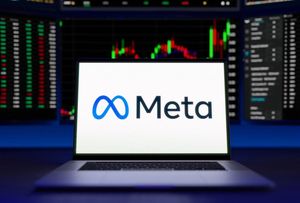
The global semiconductor sector is currently experiencing a profound transformation, marked by an unprecedented surge in investment across both venture capital and public markets. This financial influx is primarily fueled by the insatiable demand for Artificial Intelligence (AI) capabilities and aggressive geopolitical strategies aimed at bolstering domestic manufacturing and supply chain resilience. The immediate significance of this investment wave is a rapid acceleration in chip development, a strategic re-alignment of global supply chains, and a heightened competitive landscape as nations and corporations vie for technological supremacy in the AI era.
The AI Supercycle and Strategic Re-alignment: A Deep Dive into Semiconductor Investment Dynamics
The current investment landscape in semiconductors is fundamentally shaped by the "AI supercycle," a period of intense innovation and capital deployment driven by the computational demands of generative AI, large language models, and autonomous systems. This supercycle is propelling significant capital into advanced chip design, manufacturing processes, and innovative packaging solutions. Projections indicate the global semiconductor market could reach approximately $697 billion in 2025, with a substantial portion dedicated to AI-specific advancements. This is a stark departure from previous, more cyclical investment patterns, as the pervasive integration of technology across all aspects of life now underpins a more consistent, secular growth trajectory for the sector.
Technically, the focus is on developing high-performance computing (HPC) and specialized AI hardware. Venture capital, despite a global decline in overall semiconductor startup funding, has seen a remarkable surge in the U.S., with nearly $3 billion attracted in 2024, up from $1.3 billion in 2023. This U.S. funding surge, the highest since 2021, is heavily concentrated on startups enhancing computing efficiency and performance for AI. Notable investments include Groq, an AI semiconductor company, securing a $640 million Series D round; Lightmatter, focused on optical computing for AI, raising $400 million; and Ayar Labs, specializing in optical data transmission, securing $155 million. The first quarter of 2025 alone saw significant funding rounds exceeding $100 million, with a strong emphasis on quantum hardware, AI chips, and enabling technologies like optical communications. These advancements represent a significant leap from conventional CPU-centric architectures, moving towards highly parallelized and specialized accelerators optimized for AI workloads.
Beyond AI, geopolitical considerations are profoundly influencing investment strategies. Governments worldwide, particularly the United States and China, are actively intervening to fortify their domestic semiconductor ecosystems. The U.S. CHIPS and Science Act, enacted in August 2022, is a cornerstone of this strategy, allocating $52.7 billion in appropriations through 2027, including $39 billion for manufacturing grants and a 25% advanced manufacturing investment tax credit. As of July 2024, this legislation has already stimulated over half a trillion dollars in announced private sector investments across the U.S. chip ecosystem, with the U.S. projected to triple its semiconductor manufacturing capacity between 2022 and 2032. This represents a significant shift from a historically globalized, efficiency-driven supply chain to one increasingly focused on national security and resilience, marking a new era of state-backed industrial policy in the tech sector.
Corporate Beneficiaries and Competitive Realignment in the AI Chip Race
The current investment climate is creating clear winners and losers, reshaping the competitive landscape for established tech giants, specialized AI labs, and nimble startups. Companies at the forefront of AI chip development stand to benefit immensely. Public market investors are heavily rewarding firms like NVIDIA (NASDAQ: NVDA), Advanced Micro Devices (NASDAQ: AMD), and Intel (NASDAQ: INTC), whose Graphics Processing Units (GPUs) and specialized AI accelerators are indispensable for training and deploying AI models. NVIDIA, in particular, has seen its market capitalization soar past $1 trillion, a direct reflection of the massive surge in AI investment and its dominant position in the AI hardware market.
The competitive implications extend to major AI labs and tech companies, many of whom are increasingly pursuing vertical integration by designing their own custom AI silicon. Tech giants such as Alphabet (NASDAQ: GOOGL) (Google's TPU v6), Microsoft (NASDAQ: MSFT), Amazon (NASDAQ: AMZN), and Meta Platforms (NASDAQ: META) are developing in-house chips to optimize performance for their specific AI workloads, reduce reliance on external suppliers, and gain a strategic advantage. This trend disrupts existing product-service relationships, as these hyperscalers become both significant customers and formidable competitors to traditional chipmakers, driving demand for advanced memory, packaging, and compute innovations tailored to their unique needs.
For startups, the environment is bifurcated. While global VC funding for semiconductor startups has seen a decline, U.S.-based ventures focused on AI and computing efficiency are thriving. Companies like Groq, Lightmatter, and Ayar Labs are attracting substantial funding rounds, demonstrating that innovative solutions in AI hardware, optical computing, and data transmission are highly valued. These startups are poised to either carve out lucrative niche markets or become attractive acquisition targets for larger players seeking to enhance their AI capabilities. The high barriers to entry in the semiconductor industry, demanding immense capital and expertise, mean that significant government backing for both established and emerging players is becoming a critical competitive factor, further solidifying the positions of those who can secure such support.
Wider Significance: Reshaping the Global Tech Landscape
The current semiconductor investment trends are not merely about financial flows; they represent a fundamental reshaping of the broader AI landscape and global technological power dynamics. This era is defined by the strategic importance of semiconductors as the foundational technology for all advanced computing, particularly AI. The intense focus on domestic chip manufacturing, spurred by legislation like the U.S. CHIPS and Science Act, the European Chips Act, and China's substantial investments, signifies a global race for technological sovereignty. This move away from a purely globalized supply chain model towards regionalized, secure ecosystems has profound implications for international trade, geopolitical alliances, and economic stability.
The impacts are wide-ranging. On one hand, it promises to create more resilient supply chains, reducing vulnerabilities to geopolitical shocks and natural disasters that previously crippled industries. On the other hand, it raises concerns about potential market fragmentation, increased costs due to redundant manufacturing capabilities, and the risk of fostering technological protectionism. This could hinder innovation if collaboration across borders becomes more restricted. The scale of investment, with over half a trillion dollars in announced private sector investments in the U.S. chip ecosystem alone since the CHIPS Act, underscores the magnitude of this shift.
Comparing this to previous AI milestones, such as the rise of deep learning or the early days of cloud computing, the current phase is unique due to the confluence of technological advancement and geopolitical imperative. While past milestones were primarily driven by scientific breakthroughs and market forces, today's developments are heavily influenced by national security concerns and government intervention. This makes the current period a critical juncture, as the control over advanced semiconductor technology is increasingly viewed as a determinant of a nation's economic and military strength. The rapid advancements in AI hardware are not just enabling more powerful AI; they are becoming instruments of national power.
The Horizon: Anticipated Developments and Lingering Challenges
Looking ahead, the semiconductor sector is poised for continued rapid evolution, driven by the relentless pursuit of AI excellence and ongoing geopolitical maneuvering. In the near term, we can expect to see further diversification and specialization in AI chip architectures, moving beyond general-purpose GPUs to highly optimized ASICs (Application-Specific Integrated Circuits) for specific AI workloads. This will be accompanied by innovations in advanced packaging technologies, such as chiplets and 3D stacking, to overcome the physical limitations of Moore's Law and enable greater computational density and efficiency. The U.S. is projected to triple its semiconductor manufacturing capacity between 2022 and 2032, indicating significant infrastructure development in the coming years.
Long-term developments are likely to include breakthroughs in novel computing paradigms, such as quantum computing hardware and neuromorphic chips, which mimic the human brain's structure and function. Venture capital investments in quantum hardware, already exceeding $100 million in Q1 2025, signal this emerging frontier. These technologies promise to unlock unprecedented levels of AI capability, pushing the boundaries of what's possible in machine learning and data processing. Furthermore, the trend of hyperscalers designing their own custom AI silicon is expected to intensify, leading to a more fragmented but highly specialized chip market where hardware is increasingly tailored to specific software stacks.
However, significant challenges remain. The expiration of the U.S. manufacturing tax credit in 2026 poses a risk to the current trajectory of domestic chip investment, potentially slowing the pace of onshoring. The immense capital expenditure required for leading-edge fabs, coupled with the scarcity of highly skilled talent, presents ongoing hurdles. Geopolitical tensions, particularly between the U.S. and China, will continue to shape investment flows and technology transfer policies, creating a complex and potentially volatile environment. Experts predict a continued arms race in AI hardware, with nations and corporations investing heavily to secure their positions, but also a growing emphasis on collaborative innovation within allied blocs to address shared challenges and accelerate progress.
A New Epoch for Semiconductors: Defining the AI Future
The current investment surge in the semiconductor sector marks a pivotal moment in AI history, fundamentally altering the trajectory of technological development and global power dynamics. The key takeaways are clear: AI is the primary catalyst, driving unprecedented capital into advanced chip design and manufacturing; geopolitical considerations are reshaping supply chains towards resilience and national security; and the industry is moving towards a more secular growth model, less susceptible to traditional economic cycles. The immediate significance lies in the rapid acceleration of AI capabilities and a strategic re-alignment of global industrial policy.
This development's significance in AI history cannot be overstated. It signifies a transition from a software-centric AI revolution to one where hardware innovation is equally, if not more, critical. The ability to design, manufacture, and control advanced semiconductors is now synonymous with technological leadership and national sovereignty. This period will likely be remembered as the era when the physical infrastructure of AI became as strategically important as the algorithms themselves. The ongoing investment, particularly in the U.S. and other strategic regions, is laying the groundwork for the next generation of AI breakthroughs.
In the coming weeks and months, it will be crucial to watch for further announcements regarding CHIPS Act funding allocations, especially as the 2026 tax credit expiration approaches. The pace of M&A activity in the fabless design and IP space, driven by the rising costs of developing next-generation nodes, will also be a key indicator of market consolidation and strategic positioning. Finally, monitoring the progress of hyperscalers in deploying their custom AI silicon will offer insights into the evolving competitive landscape and the future of vertical integration in the AI hardware ecosystem. The semiconductor sector is not just enabling the AI future; it is actively defining it.
This content is intended for informational purposes only and represents analysis of current AI developments.
TokenRing AI delivers enterprise-grade solutions for multi-agent AI workflow orchestration, AI-powered development tools, and seamless remote collaboration platforms.
For more information, visit https://www.tokenring.ai/.






